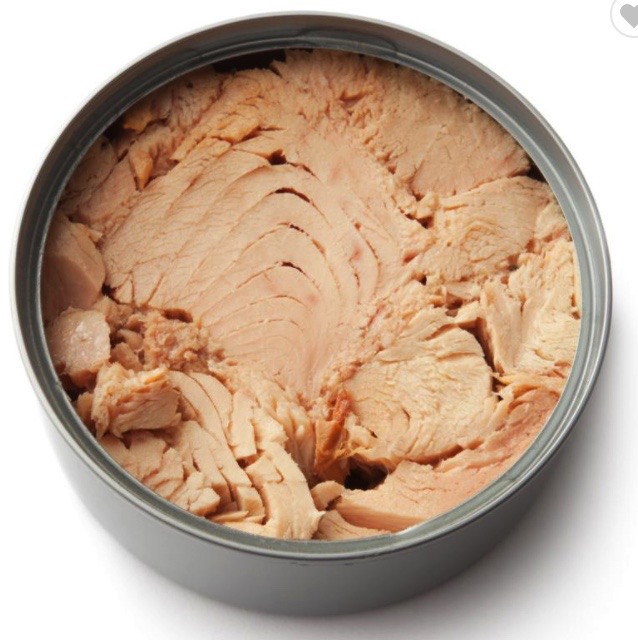 Smart Citations
Smart CitationsSee how this article has been cited at scite.ai
scite shows how a scientific paper has been cited by providing the context of the citation, a classification describing whether it supports, mentions, or contrasts the cited claim, and a label indicating in which section the citation was made.
Qualitative determination of histamine in canned yellowfin tuna (Thunnus albacares) marketed in Sardinia (Italy) by rapid screening methods
Histamine is produced by the bacterial decarboxylation of histidine, an ammino acid present in large amount especially in scombroid fish such as tuna. Fish containing high levels of histamine have been associated with many instances of “scombroid poisoning”. Since histamine is heat resistant, its presence has been used as an indicator of the good manufacturing practice and of the preservation state of canned tuna. In this study we have applied a rapid screening method to determine the presence of histamine in canned tuna marketed in Sardinia (Italy). A total of 165 samples of canned tuna were screened for the qualitative determination of histamine by HistaSure™ Fish Rapid Test. The results were consistently in agreement with the food safety criteria (<100 mg/kg of histamine) laid down in EC Regulation 2073/2005 (as amended). The HistaSure™ kit was confirmed as a rapid screening method for the presence of histamine in canned tuna.
Downloads
2. Altieri, I., Semeraro, A., Scalise, F., Calderari, I., Stacchini, P. (2016). European official control of food: Determination of histamine in fish products by a HPLC–UV-DAD method. Food Chemistry, 211, 694–699.
3. Nei, D., Nakamura, N., Ishihara, K., Kimura, M. Satomi, M. (2017). A rapid screening of histamine concentration in fish fillet by direct analysis in real time mass spectrometry (DART-MS). Food Control, 75, 181-186.
4. Silva, T.M., Sabaini, P.S., Evangelista, W.P., Gloria, M.B.A (2011). Occurrence of histamine in Brazilian fresh and canned tuna. Food Control, 22, 323-327.
5. Khan, S., Carneiro, L.S.A., Vianna, M.S., Romani, E.C., Aucelio, R.Q. (2017). Determination of histamine in tuna fish by photoluminescence sensing using thioglycolicacid modified CdTe quantum dots and cationic solid phase extraction. Journal of Luminescence, 182, 71–78.
6. Ministero della Salute, Direzione Generale per l’Igiene e la Sicurezza degli Alimenti e la Nutrizione (2020). RASFF Rapid Alert System for Food and Feed Sistema di Allerta Rapido per Alimenti e Mangimi. Relazione Annuale 2019. http://www.salute.gov.it/imgs/C_17_pubblicazioni_2914_allegato.pdf. Accessed 28.09.2020.
7. Tsai, Y.H., Kung, H.F., Lee, T.M., Chen, H.C., Chou, S.C., Wei, C.I., Hwang, D.F. (2005) Determination of histamine in canned mackerel implicated in a food borne poisoning. Food Control, 16, 579–585.
8. Zarei, M., Najafzadeh, H., Enayati, A., & Pashmforoush, M. (2011). Biogenic amines content of canned tuna fish marketed in Iran. American-eurasian Journal of Toxicological Sciences, 3, 190–193.
9. Mercogliano, R., Santonicola, S. (2019). Scombroid fish poisoning: Factors influencing the production of histamine in tuna supply chain. A review. LWT - Food Science and Technology, 114, 108374.
10. Köse, S., Kaklıkkaya, N., Koral, S., Tufan, B., Buruk, K.C., Aydın, F. (2011). Commercial test kits and the determination of histamine in traditional (ethnic) fish products-evaluation against an EU accepted HPLC method. Food Chemistry, 125, 1490–1497.
11. Rogers, P.L., Staruszkiewicz, W.F. (2000). Histamine Test Kit Comparison. Journal of Aquatic Food Product Technology, 9, 2, 5 – 17.
12. Bajpai, V.K., Oh, C., Khan, I., Haldorai, Y., Gandhi, S., Lee, H., Song, X., Kim, M., Upadhyay, A., Chen, L., Huh, Y.S., Han, Y.K., Shukla, S. (2020). Fluorescent immunoliposomal nanovesicles for rapid multi-well immuno-biosensing of histamine in fish samples. Chemosphere, 243, 125404.
13. Nadeem, M., Naveed, T., Rehman, F., Xu, Z. (2019). Determination of histamine in fish without derivatization by indirect reverse phase-HPLC method. Microchemical Journal, 144, 209–214.
14. Eva, L.R., Alberto, A., Jesus, H.B., Jesus, M.P. (2013). NMR study of histidine metabolism during alcoholic and malolactic fermentation of wine and their influence on histamine production. Journal of Agriculture Food Chemistry, 61, 9464–9469.
15. Sarzamin, K., Leonardo, S.A.C., Monica, S.V., Eric, C.R., Ricardo, Q.A. (2017). Determination of histamine in tuna fish by photoluminescence sensing using thioglycolic acid modified CdTe quantum dots and cationic solid phase extraction. Journal of Luminescence, 182, 71–78.
16. Tibor, J., Davor, V., Jasenka, G., Gajdos, K., Lara, M., Sanja, V., Mile, I. (2017). Determination of histamine in fish by Surface Enhanced Raman Spectroscopy using silver colloid SERS substrates. Food Chemistry, 224, 48–54.
17. Lili, H., Zhongqi, X., Takeshi, H.K., Li, S. (2017). Simultaneous determination of aliphatic, aromatic and heterocyclic biogenic amines without derivatization by capillary electrophoresis and application in beer analysis. Journal of Chromatography A, 1482, 109–114.
18. Colombo, F. M., Cattaneo, P., Confalonieri, E., & Bernardi, C. (2018). Histamine food poisonings: A systematic review and meta-analysis. Critical Reviews in Food Science and Nutrition, 58 (7), 1131–1151.
How to Cite
PAGEPress has chosen to apply the Creative Commons Attribution NonCommercial 4.0 International License (CC BY-NC 4.0) to all manuscripts to be published.

 https://doi.org/10.4081/ijfs.2021.9379
https://doi.org/10.4081/ijfs.2021.9379





